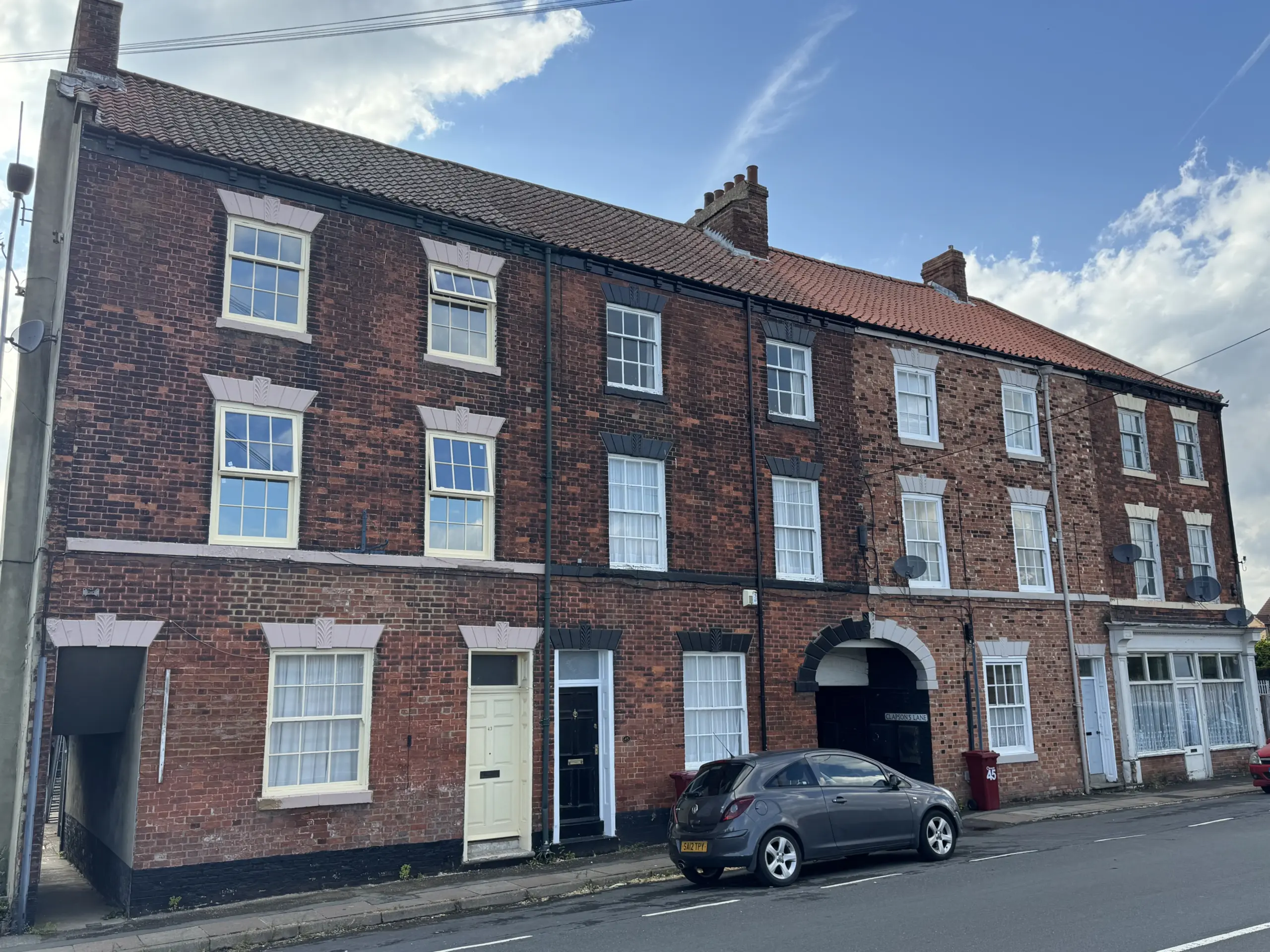When you own a property in a conservation area, replacing windows isn’t simply a matter of choosing what looks good to you. It’s a process that requires careful consultation with your local Conservation Officer from the very beginning – and failing to do so can result in costly mistakes that require complete rectification.
The hidden costs of getting it wrong
The importance of early consultation with Conservation Officers became starkly apparent in our recent project on Waterside Road in Barton on Humber. This Victorian terraced property serves as a perfect case study of what can happen when conservation requirements are overlooked during the initial window replacement process.
The homeowner had previously commissioned replacement windows for two upper-floor openings. While the windows themselves were well-made, they featured a subtle but critical flaw – an incorrect glazing pattern.
The original Georgian and Victorian heritage of the area called for a traditional nine-pane sliding sash configuration, but the replacement windows had been manufactured with a twelve-panel design.
This might seem like a minor detail to the untrained eye, but in a conservation area, such details carry enormous significance. The visual inconsistency was immediately apparent when comparing the property to its neighbours in the terrace, disrupting the historic streetscape’s carefully preserved harmony.
The result? The local Conservation Officer rightfully mandated that the non-compliant windows be completely replaced – turning what should have been a straightforward upgrade into a costly double replacement project.
Why conservation areas have strict window requirements
Conservation areas exist to preserve the special architectural and historic character of our towns and villages. Windows are particularly crucial to this preservation because they:
- Define the building’s character – the glazing pattern, frame proportions, and opening mechanisms are integral to a building’s architectural identity
- Maintain streetscape harmony – in terraced properties, especially, consistent window designs create the unified appearance that gives conservation areas their special character
- Preserve historical authenticity – original glazing patterns reflect the architectural trends and glazing technology of their era
When windows don’t conform to these historical patterns, they immediately stand out as incongruous modern insertions, undermining the very heritage the conservation area seeks to protect.
The Conservation Officer’s role
Conservation Officers are specialist professionals who understand the historical and architectural significance of different building elements. Their role includes:
- Assessing proposed changes – evaluating whether new windows will preserve or enhance the conservation area’s character
- Providing expert guidance – advising on appropriate designs, materials, and installation methods
- Ensuring compliance – they have the authority to require changes to non-compliant installations
Far from being obstacles, Conservation Officers are valuable allies in ensuring your window replacement project succeeds the first time.
Their expertise can save you from costly mistakes and help you achieve the best possible outcome for both your property and the wider conservation area.
Steps to success in conservation areas
To avoid the costly mistakes demonstrated in our Waterside Road case study, follow these essential steps:
- Consult your Conservation Officer early – before choosing designs or materials, discuss your plans with your local authority’s Conservation Officer.
- Research your property’s history – understand the architectural period and typical window styles for your building type and era.
- Choose experienced professionals – work with a joinery company that has proven experience in heritage and conservation projects.
- Plan for authentic details – pay attention to glazing patterns, frame proportions, hardware, and opening mechanisms that match the historical period.
- Consider your neighbours – in terraced properties, especially, ensure your windows will harmonise with the existing streetscape.
- Document everything – keep records of all consultations and approvals to demonstrate compliance if questions arise later.
The right way to approach window replacement
Our approach to the Waterside Road rectification project demonstrates the value of proper consultation from the outset.
Early Engagement
We worked closely with both the homeowner and the Conservation Officer to understand the exact requirements before any manufacturing began.
Collaborative Planning
A site meeting at our workshop allowed all parties to examine samples and finalise the precise design requirements, ensuring everyone was aligned on the outcome.
Heritage Expertise
Our experience with period and heritage properties meant we understood the importance of authentic proportions and traditional glazing patterns.
Modern Performance
We delivered windows that maintained historical authenticity while providing improved thermal and acoustic performance – proving that conservation compliance doesn’t mean sacrificing comfort.
The importance of choosing the right joinery company
The Waterside Road case also highlights why it’s crucial to work with a joinery company that specialises in heritage and period properties. At Pelham Joinery, our extensive experience with conservation projects means we understand these requirements from the outset.
We can guide you through the consultation process and ensure your windows meet all heritage requirements while delivering modern performance standards.
